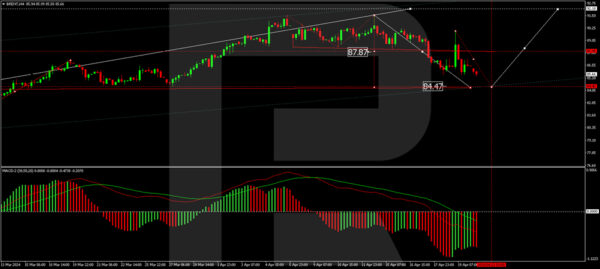Brent crude oil prices fell to a four-week low of 86.50 USD on Monday, influenced by several contributing factors. The primary cause of the decline was a reduction in geopolitical tensions as Iran’s rhetoric toward Israel showed signs of de-escalation. This change is significant given that Iran is the third-largest OPEC oil producer, with substantial exports to China and other countries, making stability in the region crucial for global oil markets.
On the demand side, US crude oil inventories rose 2.7 million barrels for the week, nearly double what was anticipated. This unexpected increase has put additional pressure on oil prices.
Furthermore, global economic uncertainties and concerns that the Federal Reserve may maintain elevated interest rates for an extended period also impact the outlook for oil demand. Heightened interest rates tend to strengthen the US dollar, making oil, priced in dollars, more expensive for holders of other currencies. However, the current stability of the US dollar is providing some support, preventing even steeper declines in oil prices.
Technical analysis of Brent
On the H4 chart, Brent established a consolidation range at around 87.87. The downward breakout from this range initiated a correction wave to 84.48. After reaching this target, the market may see a rebound towards 92.00, potentially continuing towards 95.00. This bullish scenario is supported by the MACD indicator, currently below zero, suggesting that the lows may soon be updated.
The H1 chart shows that Brent is forming the fifth correction structure towards 84.48. Once this level is reached, there may be potential for a rebound to 87.87 (testing from below). A successful breakout from this range upward could lead to further growth towards 90.50, with a possible continuation to 92.00. The Stochastic oscillator, currently below 20, indicates readiness to initiate a new growth structure towards higher levels, supporting the possibility of an upward trend resuming after the correction.






![Week ahead – ECB set to cut, BoC might pause as Trump U-turns on tariffs [Video]](https://www.actionforex.com/wp-content/uploads/2018/04/f-ecb29-218x150.jpg)









